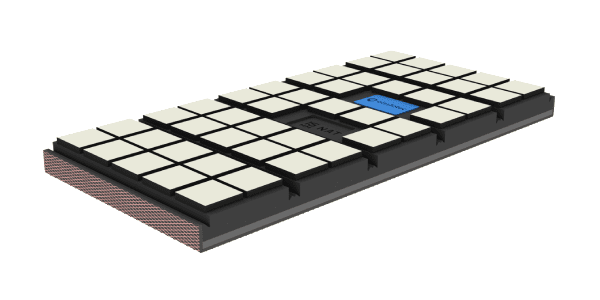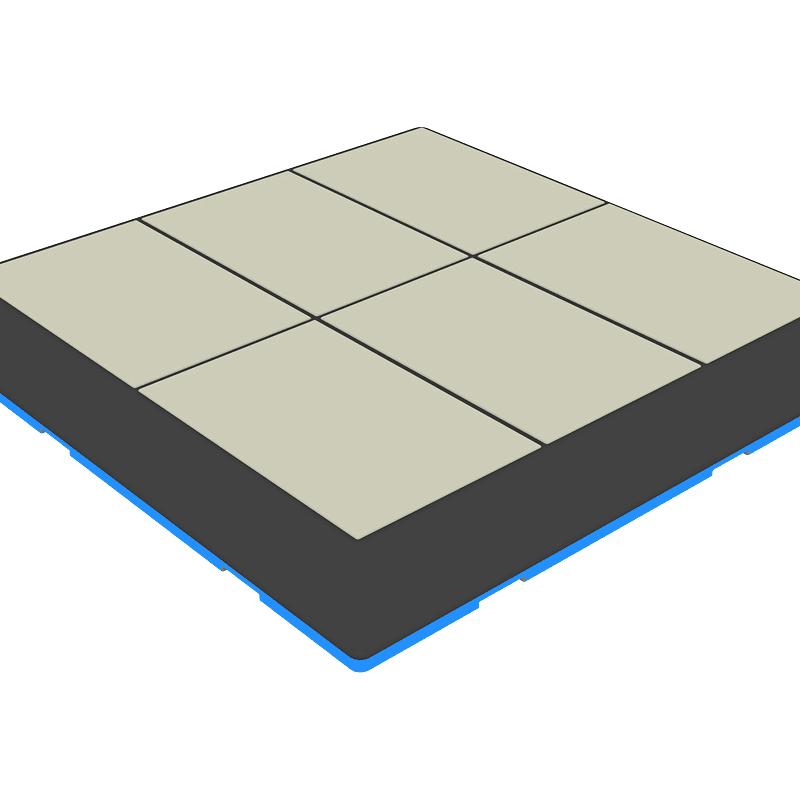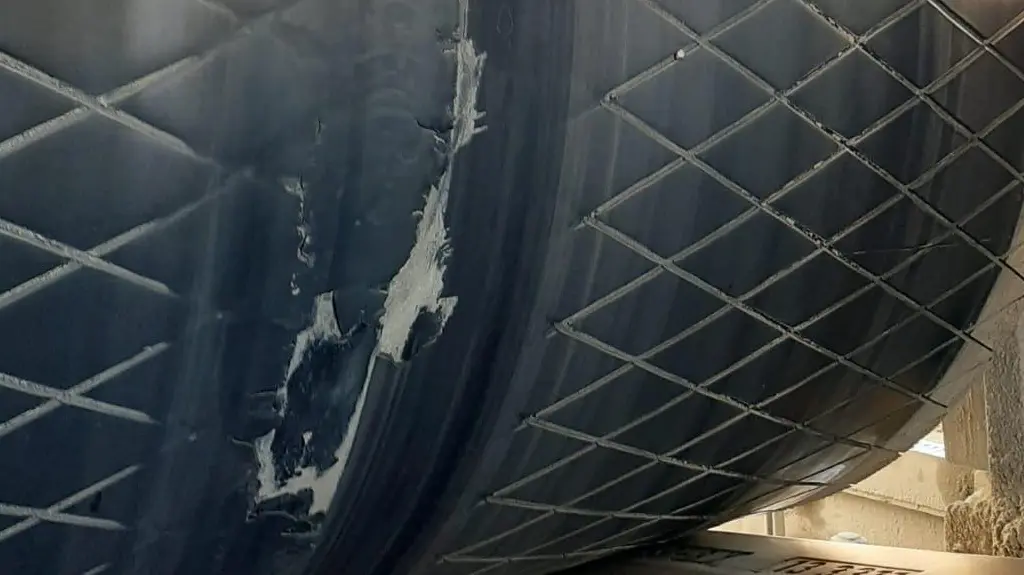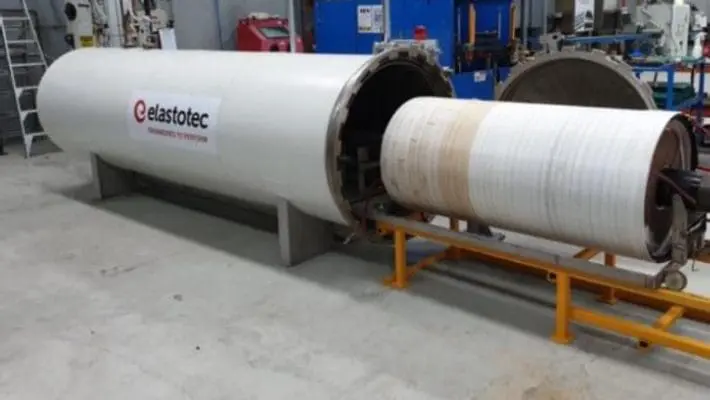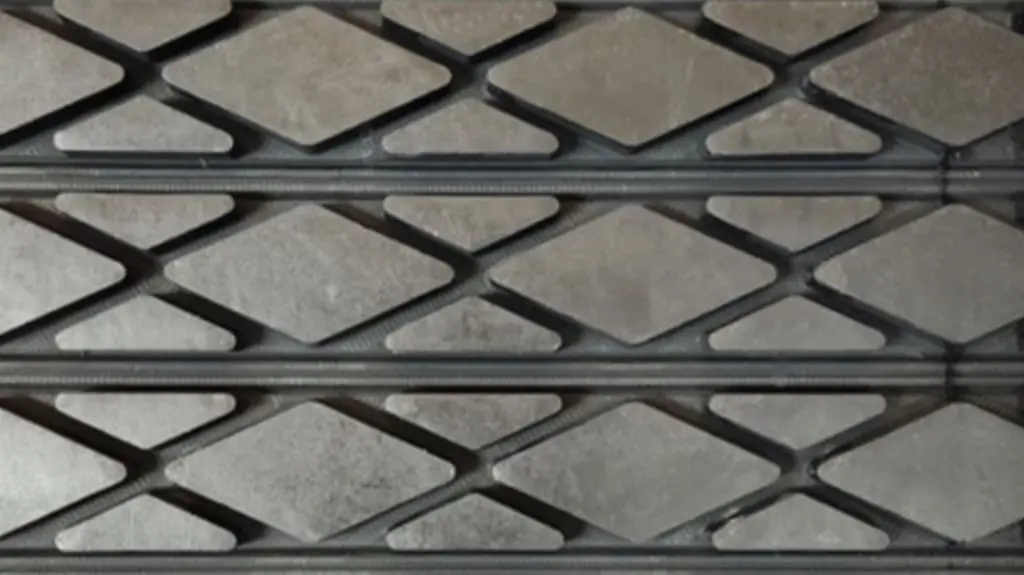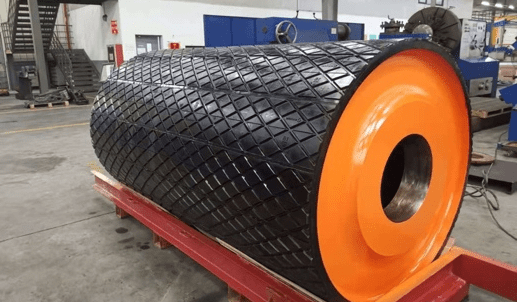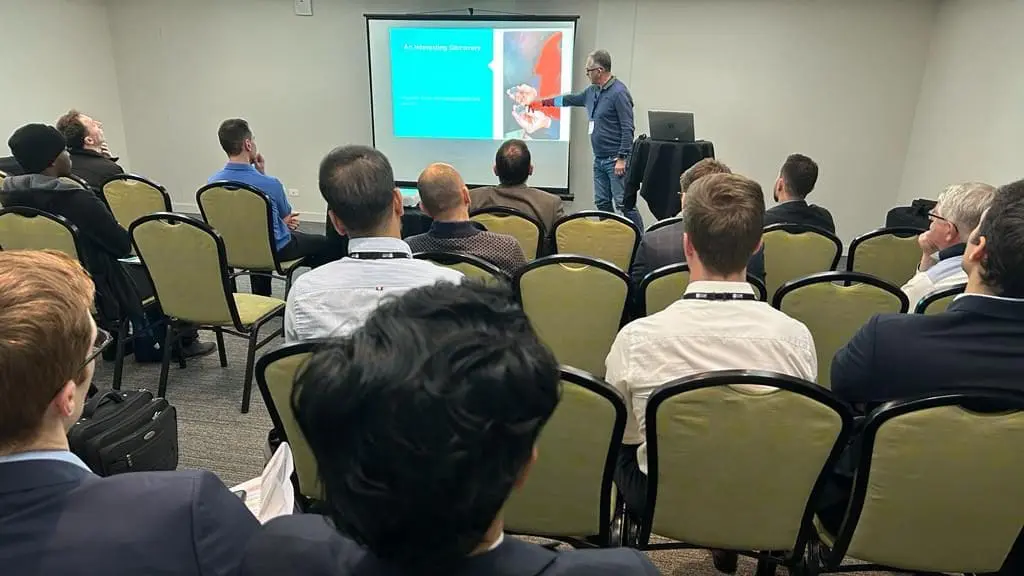Elastotec Hot Vulcanised Lagging Adhesive – Material Safety Data Sheet
| Date prepared: | 28/10/2022 | Reasons for issue: | New material |
| Date last reviewed: | Next review: | 28/10/2027 | |
| Manufacture/Importer Details | |||
| Business name | Elastotec P/L | ABN | 65 137 437 239 |
| Telephone | +61 2 8987 1922 | ||
| Address | Unit 1 / 61 Somersby Falls Road, Somersby NSW 2250 Australia | ||
| Emergency Contact | |||
| Business name | Elastotec P/L | Telephone | As above or after hours +61 423 200 178 |
| david@elastotec.com.au | |||
Section 1: Product Identification
| Product: | Pulley Lagging Hot Vulcanising Adhesive |
|---|---|
| Chemical Nature: | Solution of rubber in a suitable solvent system. |
| Uses: | Brush or spray-on product to adhere unvulcanised rubber to substrate in for example tyre retreading |
Section 2: Hazards Identification
Classified as Hazardous according to the criteria of the Australian Safety and Compensation Council ASCC (formerly NOHSC) Approved Criteria for Classifying Hazardous Substances [NOHSC: 1008] 3rd Edition.
| GHS Classification | ||
|---|---|---|
| Hazard Categories: | Flammable Liquids: Category 2 Aspiration Hazard: Category 1 Skin Corrosion/Irritation: Category 2 Toxic to Reproduction: Category 2 Specific Target Organ Toxicity – Single Exposure: Category 3 Narcotic effects Specific Target Organ Toxicity – Repeated Exposure: Category 2 Chronic Hazard to the Aquatic Environment: Category 2 Eye Damage: Category 1 Skin Sensitisation: Category 1 Skin irritation: Category 2 STOT SE 1 STOT SE 2 Aquatic Acute 1 Aquatic chronic 3 | |
| GHS Label Elements | ||
|---|---|---|
| Signal Word: | Danger | |
| Hazard Statements | ||
|---|---|---|
| H225 | Highly flammable liquid and vapour. | |
| H304 | May be fatal if swallowed and enters airways. | |
| H315 | Causes skin irritation. | |
| H317 | May cause an allergic skin reaction. | |
| H336 | May cause dizziness or drowsiness. | |
| H361 | Suspected of damaging fertility or the unborn child. | |
| H373 | May cause damage to organs through prolonged or repeated exposure. | |
| H411 | Toxic to aquatic life with long lasting effects. | |
| H370 | Causes damage to organs. (central nervous system (CNS)). | |
| H371 | May cause damage to organs. (respiratory tract) | |
| H400 | Very toxic to aquatic life. | |
| H412 | Harmful to aquatic life with long lasting effects. | |
| H318 | Causes serious eye damage. | |
| Precautionary Statements | ||
|---|---|---|
| General | ||
| P101 | If medical advice is needed, have product container or label at hand. | |
| P102 | Keep out of reach of children. | |
| Preventative | ||
| P103 | Read label before use. | |
| P201 | Obtain special instructions before use. | |
| P202 | Do not handle until all safety precautions have been read and understood. | |
| P210 | Keep away from heat/sparks/open flames/hot surfaces. No smoking. | |
| P233 | Keep container tightly closed. | |
| P240 | Ground/bond container and receiving equipment. | |
| P241 | Use explosion-proof electrical/ventilation/lighting equipment. | |
| P242 | Use only non-sparking tools. | |
| P243 | Take precautionary measures against static discharge. | |
| P260 | Do not breathe dust, fume, gas, most, vapours or spray. | |
| P261 | Avoid breathing mist, vapours, spray. | |
| P264 | Wash hands, face and all exposed skin thoroughly after handling. | |
| P270 | Do not eat, drink or smoke when using this product. | |
| P271 | Use only outdoors or in a well-ventilated area. | |
| P272 | Contaminated work clothing should not be allowed out of the workplace. | |
| P280 | Wear protective clothing, gloves, eye/face protection and suitable respirator. | |
| P281 | Use personal protective equipment as required. | |
| Response Precautionary Statements | ||
|---|---|---|
| P301 + P310 | IF SWALLOWED: Immediately call a POISON CENTRE or doctor/physician. | |
| P303 + P361 + P353 | If ON SKIN (or hair): Remove/Take off immediately all contaminated clothing. Rinse skin with water/shower | |
| P304 + P340 | IF INHALED: Remove victim to fresh air and keep at rest in a position comfortable for breathing. | |
| P312 | Call a POISON CENTER or doctor/physician if you feel unwell. | |
| P314 | Get medical advice/attention if you feel unwell. | |
| P331 | Do NOT induce vomiting. | |
| P332 + P313 | If skin irritation occurs: Get medical advice/attention. | |
| P335 + P334 | Brush off loose particles from skin. Immerse in cool water/wrap in wet bandages. | |
| P362 | Take off contaminated clothing and wash before reuse. | |
| P302 + P352 | IF ON SKIN: Wash with plenty of soap and water. | |
| P333 + P313 | If skin irritation or rash occurs: Get medical advice/attention. | |
| P321 | Specific treatment (see ... on this label) ... Reference to supplemental first aid instruction. | |
| P363 | Wash contaminated clothing before reuse. | |
| P305 + P351 + P338 | IF IN EYES: Rinse cautiously with water for several minutes. Remove contact lenses, if present and easy to do. Continue rinsing. | |
| P308 + P313 | IF exposed or concerned: Get medical ad. | |
| P309 + P311 | IF exposed or if you feel unwell: Call a POISON CENTER or doctor/physician.vice/attention. | |
| Storage Precautionary Statements | ||
|---|---|---|
| P403 + P233 | Store in a well-ventilated place. Keep container tightly closed. | |
| P405 | Store locked up | |
| Disposal Precautionary Statements | ||
|---|---|---|
| P501 | Dispose of contents and container in accordance with local, regional, national and international regulations. | |
| Poison Schedule: | S5 Caution | |
| Dangerous Goods Class: | 3 | |
Section 3: Composition Identification
| Hazardous Ingredients | Cas No: | Concentration of total composition by weight: |
|---|---|---|
| Solvent naphtha (petroleum), light aliphatic with components n-Hexane | 64742-89-8 110-54-3 | 60-75% 10–30% (Proportion of Naphtha Solvent) |
| Toluene | 108-88-3 | <10% |
| Resorcinol | 108-46-3 | <0.3% |
| Formaldehyde | 50-00-0 | <0.3% |
| Description of Non-Hazardous Ingredients | ||
|---|---|---|
| Base Rubber Compound: | Natural Rubber polymer, Silica and Carbon Black reinforced. Zinc Oxide and Stearic Acid activation. Amine derivative antioxidants. Organic Accelerators in combination with Sulphur. Miscellaneous additives include Resins and Adhesion Promoters. | |
| Solvent: | Naphtha (petroleum) light aliphatic distillate CAS No.: 64742-89-8 | |
Section 4: First Aid Measures
| First Aid | Measure |
|---|---|
| Eye Contact: | In the event of eye contact immediately flush with plenty of water. If persistent irritation occurs, obtain medical attention |
| Skin Contact: | Remove contaminated clothing. Immediately flush skin with large amounts of water for at least 15 minutes, and follow by washing with soap and water if available. If redness, swelling, pain and/or blisters occur, transport to the nearest medical facility for additional treatment. |
| Inhalation: | Remove to fresh air. If rapid recovery does not occur, transport to nearest medical facility for additional treatment. |
| Ingestion: | If swallowed, do not induce vomiting: transport to nearest medical facility for additional treatment. If vomiting occurs spontaneously, keep head below hips to prevent aspiration. If any of the following delayed signs and symptoms appear within the next 6 hours, transport to the nearest medical facility: Fever greater than 101°F (37°C), shortness of breath, chest congestion or continued coughing or wheezing. |
Section 5: Fire Fighting Measures
| Hazardous Decomposition Products from Combustion |
|---|
| Natural Rubber compounds are combustible and generate Carbon Monoxide and complex fumes derived from the decomposition products of Organic Accelerators, Antioxidants, Activators, Plasticisers and Process Aids. Incomplete combustion of solvent can produce Carbon Monoxide. |
| Extinguishing Media |
| Foam. Dry chemical powder, carbon dioxide, sand or earth may be used for small fires only. Do not discharge extinguishing waters into the aquatic environment. DO NOT USE A WATER JET ON OPEN SPILLAGES Mixture will float and can be re-ignited on water. The vapour is heavier than air, spreads along the ground and distant ignition is possible. There is a moderate risk of an explosion from this product if commercial quantities are involved in a fire. Firefighters should take care and appropriate precautions. Water spray may be used to cool drums involved in a fire, reducing the chances of an explosion. |
| Protective Clothing |
| In the event of fire wear self-contained breathing apparatus and a full protective suit. |
Section 6: Accidental Release Measures
In the event of a major spill, prevent spillage from entering drains or water courses. Evacuate the spill area and deny entry to unnecessary and unprotected personnel.
Immediately call the Fire Brigade.
Personal protective equipment should be worn as per Section 8, with the addition of a respirator, fitted with a type A cartridge for organic vapours, if there is a build-up of vapour or mist in the spill area.
Stop leak if safe to do so, and contain spill. Absorb onto sand, vermiculite or other suitable absorbent material. If spill is too large or if absorbent material is not available, try to create a dyke to stop material spreading or going into drains or waterways. Avoid using sawdust or other combustible material. Any electrical equipment should be non-sparking. Any equipment capable of building an electrostatic charge should be electrically grounded. Sweep up and shovel or collect recoverable product into labelled containers for recycling or salvage, and dispose of promptly. Recycle containers wherever possible after careful cleaning. After spills, wash area preventing runoff from entering drains. If a significant quantity of material enters drains, advise emergency services. This material may be suitable for approved landfill. Ensure legality of disposal by consulting regulations prior to disposal.
Section 7: Handling And Storage
| Handling |
|---|
| Do not consume food when handling this product. Keep exposure to this product to a minimum, and minimise the quantities kept in work areas. Check section 8 of this SDS for details of personal protective measures, and make sure that those measures are followed. The measures detailed below under “Storage” should be followed during handling in order to minimise risks to persons using the product in the workplace. Also, avoid contact or contamination of product with incompatible materials listed in Section 10. |
| Storage |
|---|
| Store solution below 25°C. Store solution in absence of direct light. This product is a Scheduled Poison. Observe all relevant regulations regarding sale, transport and storage of this schedule of poison. Store in a cool, well-ventilated area, and make sure that surrounding electrical devices and switches are suitable. Check containers periodically for leaks. Containers should be kept closed in order to minimise contamination and possible evaporation. Make sure that the product does not come into contact with substances listed under “Incompatibilities” in Section 10. If you keep more than 2500kg or L of Dangerous Goods of Packaging Group II, you may be required to licence the premises or notify your Dangerous Goods authority. If you have any doubts, we suggest you contact your Dangerous Goods authority in order to clarify your obligations. Check packaging – there may be further storage instructions on the label. |
Section 8: Exposure Controls & Personal Protection
| First Aid | Measure |
|---|---|
| Skin Protection: | Impermeable gloves should be worn, and all skin areas should be covered. |
| Eye Protection | Eye protection should be worn (goggles as a minimum). |
| Respiratory Protection: | ||||||||||||
|---|---|---|---|---|---|---|---|---|---|---|---|---|
| Rubber Cement application:This product should be used in a well-ventilated area. A respirator fitted with a Type A cartridge for organic vapours should be used in less ventilated spaces. Confined spaces should be force ventilated. In the absence of occupational exposure standards for this product, it is recommended that the following are adopted: | ||||||||||||
| Material | Source | Type | ppm | mg/m3 | Notation | |||||||
| n-Hexane | ACGIH | TWA | 50 ppm | |||||||||
| n-Hexane | AU OEL | STEL | not set | |||||||||
| n-Hexane | ACGIH | SKIN_DES | Can be absorbed through the skin | |||||||||
| n-Hexane | AU OEL | TWA | 20 ppm | 72 mg/m3 | ||||||||
| Toluene | ACGIH | TWA | 20 ppm | |||||||||
| Toluene | AU OEL | TWA | 50 ppm | 191 mg/m3 | ||||||||
| Toluene | AU OEL | TWA | 150 ppm | 574 mg/m3 | ||||||||
| Toluene | AU OEL | SKIN_DES | Can be absorbed through the skin | |||||||||
| Vulcanisation of Dried Cement: Volatile materials may be evolved from Rubber compounds during cure and, in general, the higher the temperature the more concentrated is the fumes in the surrounding atmosphere. The composition of Rubber fume is complex but emissions from Natural Rubber compounds are known to contain Carbon Dioxide, Water, and traces of Nitrosamines and Polycyclic Aromatic Hydrocarbons from some Accelerators and Petroleum based Oils and Resins. The C.O.S.H.H. regulations of 1988 state that rubber fume be contained within a maximum exposure level, M.E.L., of 0.75 mg/m3 measured by personal operator sampling, and expressed as an 8 hour time weighted average. This limit has now been reduced to 0.6 mg/m3 since January 1990. When curing Natural Rubber compounds, operate at temperatures as low as is reasonably compatible with economic throughput. Sufficient local exhaust ventilation must be provided at processing centres to ensure compliance with the regulations and the protection and safe working or process operators. | ||||||||||||
Section 9: Physical And Chemical Properties
| First Aid | Measure |
|---|---|
| Appearance: | Black liquid. |
| Odour: | Characteristic hydrocarbon solvent. |
| pH: | Not Relevant. |
| Vapour Pressure: | Data not available. |
| Flash Point: | Typical <-20°C |
| Explosion/Flammability – Limits in Air: | Data not available. |
| Auto-ignition Temperature: | Data not available. |
| Boiling Point/Range (°C): | Typical 66–110°C |
| Freezing Point: | No specific data. Liquid at normal temperatures. |
| Solubility: | Insoluble in water. Soluble in petroleum based solvents. |
| Specific Gravity: | 0.79 at 20°C |
| Flammability Dried Cement: | Ignition Temperature > 250°C |
Section 10: Stability And Reactivity
| Liquid Rubber Cement | ||
|---|---|---|
| Reactivity: | This product is unlikely to react or decompose under normal storage conditions. However, if you have any doubts, contact the supplier for advice on shelf life properties. | |
| Conditions to Avoid: | This product should be kept in a cool place, preferably below 30°C. Keep containers tightly closed. Containers should be kept dry. Keep containers and surrounding areas well ventilated. Keep away from sources of sparks or ignition. Any electrical equipment in the area of this product should be flame proofed. | |
| Materials to Avoid: | Oxidising agents. | |
| Hazardous Decomposition Products: | Combustion forms carbon dioxide, and if incomplete, carbon, carbon monoxide Products and smoke. Water is also formed. This product will not undergo polymerisation reactions. | |
| Dried Cement | ||
| Apart from the onset of cure, Natural Rubber compounds are quite stable up to curing temperatures. However, after prolonged heating above these temperatures they will start to decompose, finally emitting fumes and vapours around 250°C, which are toxic and flammable. The composition of the breakdown products is complex but will contain aliphatic and aromatic oils and tars, coupled with some sulphur, and also amine, based organic compounds. | ||
Section 11: Toxicological Information
| Naphtha (Petroleum) Light Aliphatic Distillate | ||
|---|---|---|
| Toxicology Information: | Repeated Dose Toxicity: – Causes damage to organs through prolonged or repeated exposure. – Central nervous system: repeated exposure affects the nervous system. – Kidney: caused kidney effects in male rats which are not considered relevant to humans. – Peripheral nervous system: causes peripheral neuropathy which can be potentiated by ketones (n-Hexane). | |
| Health Hazard: | Vapours may cause drowsiness and dizziness. Slightly irritating to respiratory system. Irritating to skin. Repeated exposure may cause skin dryness or cracking. Vapours may be irritating to the eye. Harmful: May cause lung damage if swallowed. Possibility of organ or organ system damage from prolonged exposure; see Chapter 11 for details. Target organ(s): Central Nervous System (CNS). Peripheral Nervous System. Harmful: Danger of serious damage to health by prolonged exposure through inhalation. Causes serious nerve damage by prolonged exposure resulting in sensory loss. Possible risk of impaired fertility | |
| Reproductive Toxicity: | This material has been classified as a Category 2 Hazard. | |
| Mutagenicity: | This material has been classified as non-hazardous. | |
| Specific Target Organ Toxicity (STOT): | Repeated Exposure: This material has been classified as a Category 2 Hazard. Exposure via inhalation may effect the central nervous system. | |
| Carcinogenicity: | This material has been classified as non-hazardous. | |
| Basis for Assessment: | Information given is based on product testing, and/or similar products, and/or components. | |
| Acute Toxicity – Oral: | Expected to be of low toxicity: LD50 >2000mg/kg, Rat. Aspiration into the lungs when swallowed or vomited may cause chemical pneumonitis which can be fatal. | |
| Acute Toxicity – Dermal: | Expected to be of low toxicity: LD50 >2000mg/kg, Rat. | |
| Acute Toxicity – Inhalation: | Expected to be of low toxicity: LC50 >20mg/l / 4 hours, Rat. Expected to be of low toxicity if inhaled.High concentrations may cause central nervous system depression resulting in headaches, dizziness and nausea; continued inhalation may result in unconsciousness and/or death. | |
| Eye Irritation: | Expected to be non-irritating to eyes. Vapours may be irritating to the eye. Insufficient to classify | |
| Skin Irritation: | Causes skin irritation. Prolonged/repeated contact may cause defatting of the skin which can lead to dermatitis. | |
| Respiratory Irritation: | Inhalation of vapours or mists may cause irritation t the respiratory system. | |
| Skin Sensitisation: | Not expected to be a skin sensitiser. | |
| Other Information: | Additional Information: Exposure to very high concentrations of similar materials has been associated with irregular heart rhythms and cardiac arrest. | |
| Other Adverse Effects: | In view of the high rate of loss from solution, the product is unlikely to pose a significant hazard to aquatic life. | |
| Acute Toxicity – Fish: | Toxic: LL/EL/IL50 1–10mg/l | |
| Acute Toxicity – Algae: | Toxic: LL/EL/IL50 1–10mg/l | |
| Acute Toxicity – Other Organisms: | Aquatic Invertebrates: Toxic: LL/EL/IL50 1–10mg/l Microorganisms: Expected to be toxic: 1 < LC/EC/IC50 <=10mg/l | |
| Base Rubber Compound | None Available, but no hazardous ingredients are included in the mixture | |
Section 12: Ecological Information
| Base Rubber Compound | ||
|---|---|---|
| Ecotoxicity: | Non Available | |
| Persistence and Degradability: | No information available, but expected to be persistent (not readily degradable). | |
| Mobility: | Insoluble solid – not mobile | |
| Solvent | ||
| Acute Toxicity: | Fish: Expected to be harmful: LL/EL/IL50 >10 – <=100 mg/l | |
| Acute Toxicity: | Aquatic Invertebrates: Expected to be toxic: LL/EL/IL50 >1 – <=10 mg/l | |
| Acute Toxicity: | Algae: Expected to be toxic: LL/EL/IL50 >1 – <=10 mg/l | |
| Acute Toxicity: | Microorganisms: Expected to be toxic: LL/EL/IL50 >1 – <=10 mg/l | |
| Acute Toxicity: | Mobility: Floats on water. Adsorbs to soil and has low mobility | |
| Acute Toxicity: | Persistence/degradability: Expected to be inherently biodegradable. Oxidises rapidly by photo-chemical reactions in air. | |
| Acute Toxicity: | Bioaccumulation:Has the potential to bioaccumulate. | |
| Acute Toxicity: | Other Adverse Effects: In view of the high rate of loss from solution, the product is unlikely to pose a significant hazard to aquatic life. | |
Section 13: Disposal Considerations
Disposal should be in accordance with applicable regional, national, and local laws and regulations. Local regulations may be more stringent than regional or national requirements and must be complied with.
Section 14: Transport Information
| ADG | ||
|---|---|---|
| ADG Code: | 1287, RUBBER SOLUTION | |
| Hazchem Code: | 3YE | |
| Special Provisions: | None allocated | |
| Limited Quantities: | ADG 7 specifies a Limited Quantity value of 5 L for this class of product. | |
| Dangerous Goods Class: | Class 3: Flammable liquids | |
| Packaging Group: | II | |
| Packaging Method: | P001, IBC02 | |
| Class 3 Flammable Liquids shall not be loaded in the same vehicle or packed in the same freight container with Classes 1 (Explosives), 2.1 (Flammable Gases where flammable liquids and flammable gases are both in bulk), 2.3 (Toxic Gases), 4.2 (Spontaneously Combustible Substances), 5.1 (Oxidising Agents), 5.2 (Organic Peroxides), 6 (Toxic Substances, except Flammable Liquid is nitromethane), and 7 (Radioactive Substances). They may however be loaded in the same vehicle or packed in the same freight container with Classes 2.1 (Flammable Gases except where the Flammable Liquids and Flammable Gases are in bulk), 2.2 (Non-Flammable Non-Toxic Gases), 4.1 (Flammable Solids), 4.3 (Dangerous When Wet Substances), 8 (Corrosive Substances), 9 (Miscellaneous Dangerous Goods), Foodstuffs or foodstuff empties. | ||
Section 15: Regulatory Information
| ADG | ||
|---|---|---|
| AICS: | All of the significant ingredients in this formulation are compliant with NICNAS regulations. The following ingredients: Hexane, Ethyl benzene, Petroleum spirit, are mentioned in the SUSMP. | |
Section 16: Other Information
| Acronyms | ||
|---|---|---|
| ADG Code: | Australian Code for the Transport of Dangerous Goods by Road and Rail (7th edition) | |
| AICS: | Australian Inventory of Chemical Substances | |
| SWA: | Safe Work Australia, formerly ASCC and NOHSC | |
| CAS Number: | Chemical Abstracts Service Registry Number | |
| Hazchem Code: | Emergency action code of numbers and letters that provide information to emergency services especially firefighters. | |
| IARC: | International Agency for Research on Cancer | |
| NOS: | Not otherwise specified | |
| NTP: | National Toxicology Program (USA) | |
| R-Phrase: | Risk Phrase | |
| SUSMP: | Standard for the Uniform Scheduling of Medicines & Poisons | |
| UN Number: | United Nations Number | |
| Issue Number | Revision Number | Revision Date | Revision Details | Review Date |
|---|---|---|---|---|
| 1 | 0 | 28/10/22 | 1st Issue – New material | 28/10/27 |
| Disclaimer | ||
|---|---|---|
| This material Safety Data Sheet has been developed according to NOHSC guidelines. It is believed that the information given in this SDS is accurate at this date. The information and recommendations made herein are offered in good faith and without acceptance of responsibility for its accuracy. Elastotec PTY LTD recommends that all users of this product satisfy themselves that it is used in an appropriate manner and is suitable for the use intended. No representations or warranties of any kind, expressed or implied, are given. Prepared By: Elastotec PTY LTD | ||











